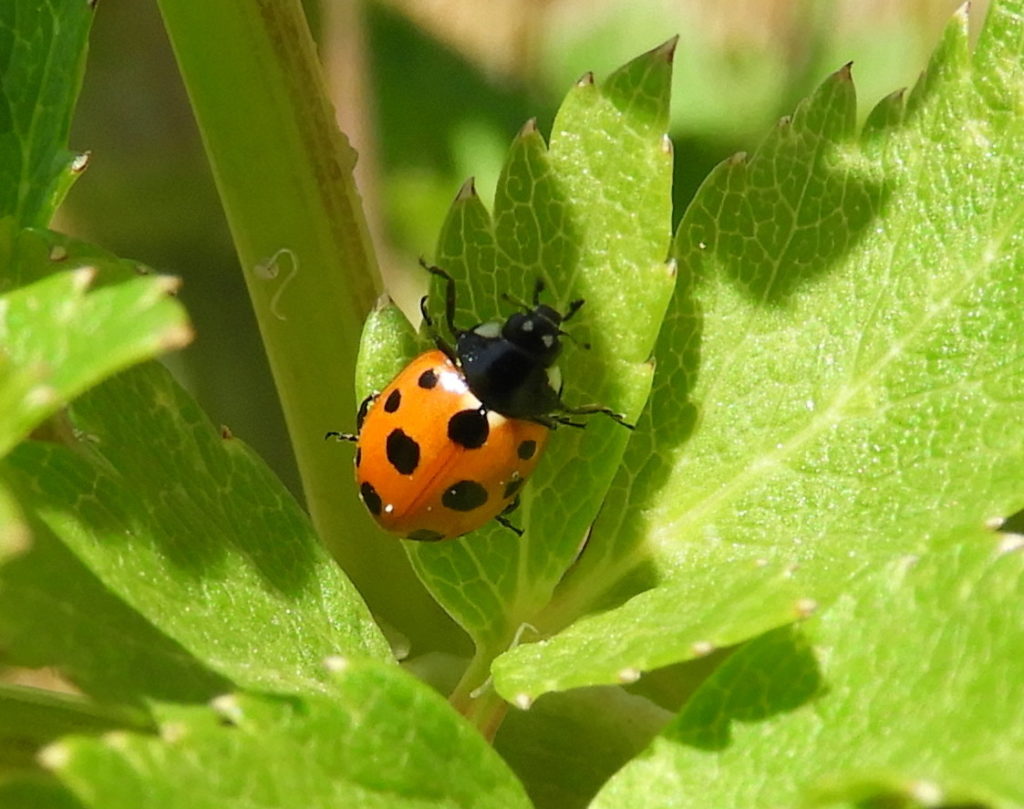
Eleven-spotted Lady Beetle © kathleenfspicer (iNaturalist)
The Eleven-spotted Lady Beetle is an introduced species from Europe. Its wing covers are usually red or orange with five black spots on each and one spot split between them. This species feeds primarily on aphids.
Status
Last Seen
1976
Fun Fact
The Eleven-spotted Lady Beetle is salt resistant, meaning that it can feed on aphids found in saline environments, such as coastal meadows.
Identification
Eleven-spotted Lady Beetles are 4 to 5 mm in length.
- Head: Black, with two white spots near the pronotum.
- Pronotum: Black, with white anterolateral corners (front corners of the pronotum are white).
- Elytra: Orange to red in color. Usually displays 11 black spots – 5 per elytron, with one central black spot spanning both elytra near the pronotum. The upper, inner corners of both elytra (above the central black spot) are white. Sometimes displays 7 spots.
- Legs: Black.
- Often confused with: Seven-spotted Lady Beetle, Asian Lady Beetle, Five-spotted Lady Beetle, Nine-spotted Lady Beetle.
Habitat
Found in dry habitats, grasslands, agricultural fields, gardens, and other low-growing vegetation. Seems to have a preference for dune ecosystems. Occasionally can be found on deciduous trees.
General Range
Native to the Palearctic – Europe and North Africa, east across Asia. Has been introduced to the United States, and can be found in the Pacific Northwest and in the Northeastern United States.
Food
Aphids, mealybugs, and other small insects.
Life Cycle
Overwinters in leaf litter, cracks in tree bark, occasionally in buildings. They usually congregate and overwinter in groups. Females emerge in the spring, breed, feed, and lay eggs on the leaves of vegetation near prey. Life cycle is shorter at warmer temperatures. They can have two generations per year. Takes up to 23 days to develop from an egg to an adult, and can live as an adult up to 55 days. Eleven-spotted Lady Beetles may be easiest to find in the spring when adults are breeding and moving to fields to feed and lay eggs, and again in the fall when they are congregating to overwinter.
More Information
You can find more information about Eleven-spotted Lady Beetles using the following links:
Vermont Distribution
Visit the iNaturalist Observation Map and Occurrence Records to find out where Eleven-spotted Lady Beetles have been seen in Vermont.







